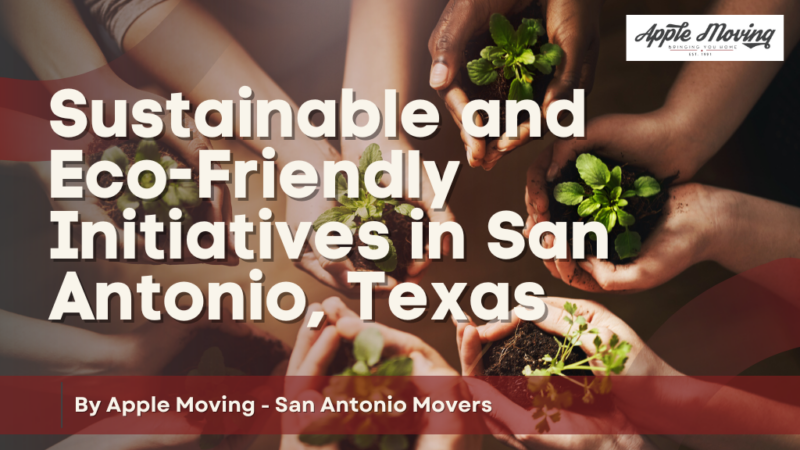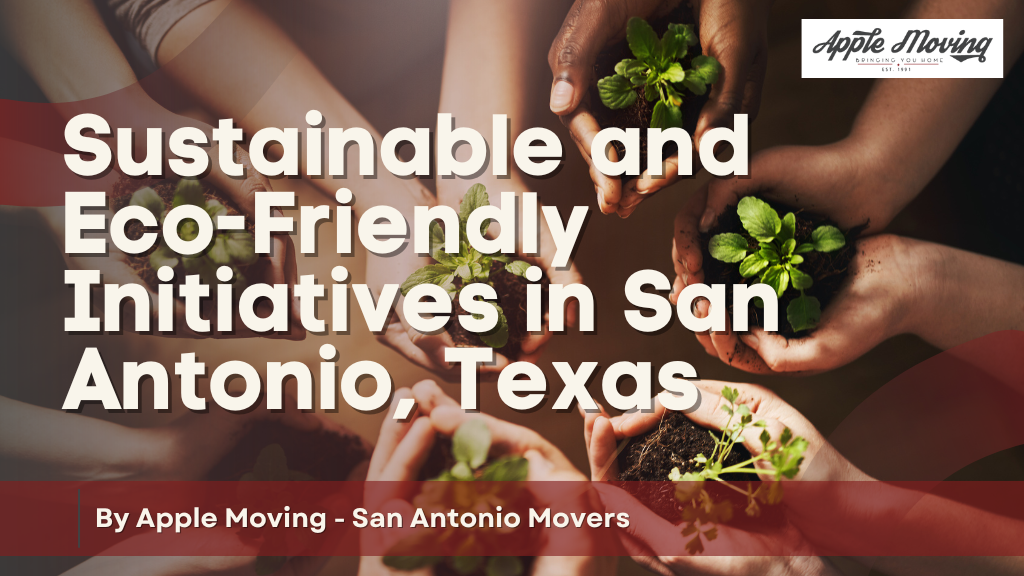Sustainable and Eco-Friendly Initiatives in San Antonio, Texas
As the world keeps on turning out to be more mindful of the natural difficulties we face, urban communities across the globe are making a move to advance practical and eco-accommodating initiatives. In San Antonio, Texas, neighborhood organizations, associations, and people cooperate to make a more manageable local area. This lively and developing city is progressing in advancing ecologically capable practices and has implemented initiatives to diminish waste, moderate energy, and protect natural resources.
Green Spaces and Parks in San Antonio
San Antonio, Texas, is a city that values sustainability and preserving its natural beauty. One of the ways this is achieved is through the city’s many green spaces and parks. Here are some of the top green spaces and parks in San Antonio:
- Brackenridge Park: This 343-acre park is one of the city’s oldest and most popular green spaces. It features trails for walking and biking, picnic areas, playgrounds, a golf course, and the San Antonio Zoo.
- Phil Hardberger Park: This 330-acre park is located in the heart of San Antonio and features over 8 miles of hiking and biking trails, dog parks, and playgrounds. It also features a large pavilion that serves as a community gathering space.
- San Antonio Riverwalk: This iconic riverwalk is a must-visit in San Antonio. It features miles of walking paths along the San Antonio River, with lush landscaping and water features.
- Hemisfair Park: This 15-acre park in downtown San Antonio features playgrounds, fountains, and plenty of green space for picnics and outdoor events. It also hosts several festivals throughout the year.
- Mitchell Lake Audubon Center: This 1,200-acre nature preserve is located just south of San Antonio and is a haven for birdwatchers and nature enthusiasts. It features hiking trails, bird blinds, and educational programs.
Public Transportation and Bike-Sharing Programs
San Antonio is working to reduce its carbon footprint by promoting alternative transportation options, such as public transportation and bike-sharing programs. Here are some of the initiatives aimed at promoting eco-friendly transportation in San Antonio:
- VIA Metropolitan Transit: San Antonio’s public transportation system, VIA, offers buses, streetcars, and vanpools throughout the city. In addition, VIA offers a mobile app that provides real-time information about bus and streetcar schedules.
- Bike Share Programs: San Antonio has bike-sharing programs, such as B-Cycle, which offers bikes for rent at various locations throughout the city. This provides an affordable and convenient way for residents and visitors to get around without relying on cars.
- Pedestrian and Bike-Friendly Infrastructure: The city has significantly invested in pedestrian and bike-friendly infrastructure, including bike lanes, sidewalks, and crosswalks. This infrastructure makes walking and biking around the city easier and safer for residents and visitors.
- Green Fleet: The city is also working to make its vehicles more eco-friendly by using alternative fuels, such as compressed natural gas and propane, and hybrid and electric vehicles.
Energy-Efficient Buildings and Sustainable Architecture
Energy-efficient buildings and sustainable architecture are vital components of modern construction practices. These initiatives prioritize preserving the environment and reducing energy consumption, resulting in significant long-term benefits for both the environment and building owners.
In San Antonio, Texas, there is a growing trend towards sustainable and eco-friendly initiatives in construction. Numerous architects and construction companies are designing and building structures with energy-efficient features such as solar panels, geothermal systems, and green roofs. Here are some examples of these initiatives:
- LEED Certified Buildings: Leadership in Energy and Environmental Design (LEED) is a certification program that recognizes buildings designed to be environmentally friendly. San Antonio has several LEED-certified buildings, including the San Antonio International Airport and the Henry B. Gonzalez Convention Center.
- Green Building Codes: The city has adopted the International Green Construction Code (IgCC), establishing minimum green building requirements. The code includes requirements for energy efficiency, water conservation, and indoor air quality.
- Solar Energy: San Antonio is known for its abundant sunshine, which makes it an ideal location for solar energy. The city has several solar projects, including a solar farm that provides renewable energy to power the San Antonio Zoo.
- Sustainable Design: Several San Antonio architectural firms focus on sustainable design practices. This includes using environmentally friendly materials, designing buildings to be energy efficient, and incorporating green spaces into building designs.
Sustainable Food and Agriculture in San Antonio
San Antonio, Texas, promotes sustainable food and agriculture practices contributing to a healthier environment and a more vibrant local economy. The city has implemented several initiatives to encourage residents and businesses to adopt more eco-friendly food production and consumption approaches. Here are some examples of these initiatives:
- Urban Agriculture: Several organizations and community gardens in San Antonio promote urban agriculture. These initiatives help provide fresh, locally grown produce while promoting sustainable agriculture practices.
- Sustainable Food Purchasing: Many restaurants in San Antonio are committed to purchasing locally sourced, sustainable ingredients. This includes supporting local farmers and using sustainable farming practices that help reduce food production’s environmental impact.
- Food Waste Reduction: The city has several initiatives to reduce food waste, including composting and food donation programs. These efforts help to reduce greenhouse gas emissions and promote sustainability in food production.
- Farmer’s Markets: San Antonio has several farmer’s markets that offer locally grown, sustainable produce. These markets help to support local farmers and promote sustainable food practices.
Recycling and Waste Reduction Programs in San Antonio
San Antonio is committed to reducing waste and promoting recycling throughout the city. Here are some examples of the recycling and waste reduction programs in San Antonio:
- Single Stream Recycling: San Antonio offers single-stream recycling, meaning all recyclable materials can be placed in one bin. This makes recycling more convenient and encourages more people to participate in recycling efforts.
- Household Hazardous Waste Collection: San Antonio has several locations where residents can dispose of hazardous household waste, such as electronics, chemicals, and batteries. These programs help to prevent hazardous waste from ending up in landfills and contaminating the environment.
- Composting: San Antonio offers a free composting program to residents, which allows them to turn food scraps and yard waste into nutrient-rich compost that can be used to fertilize gardens and landscapes.\
- Reuse and Donation Programs: San Antonio has several programs encouraging residents to donate or reuse items instead of throwing them away. This includes donation centers for clothing and household items and a tool-lending library.



